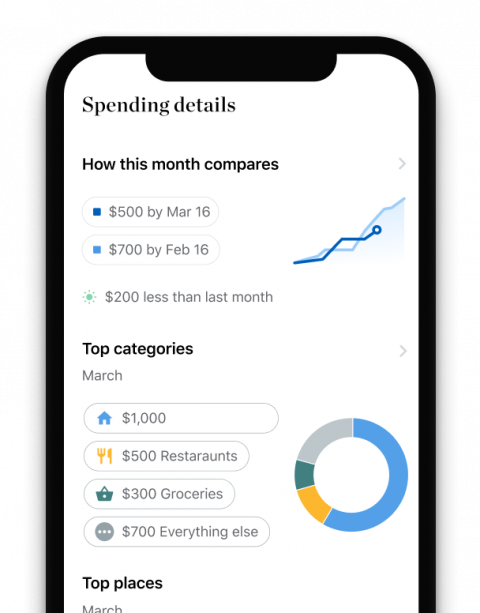Student debt was a central theme in President Joe Biden’s election campaign. And while his landmark proposal to cancel up to $20,000 per borrower was struck down in June, several other initiatives remain.
“This president has done more, especially for the most vulnerable student borrower populations, than any other administration I’ve ever seen,” says Betsy Mayotte, president and founder of The Institute of Student Loan Advisors.
But Biden’s critics say he has failed to address a core problem that prompted public pressure for forgiveness in the first place: cost. Sky-high tuition and record inflation has spurred interest rates on student loans to rise after years of lows.
Here’s what the Biden administration has done for higher education and student loans so far.
What Biden has done for borrowers in repayment
Targeted loan forgiveness. The Department of Education revised existing student loan forgiveness programs and estimates that $127 billion in loans has been canceled for more than 3.6 million borrowers during Biden’s term so far. Here’s the latest loan forgiveness breakdown:
COVID-19 forbearance. The White House repeatedly extended the broad, zero-interest pause on loan payments that began under President Donald Trump in mid-March 2020. Federal student loan payments will resume in October and, per the debt ceiling bill that Biden signed in June 2023, there can be no further extensions to the pause.
Biden also blocked a Republican-led effort to retroactively end the payment pause via the Congressional Review Act. Both the U.S. House and Senate passed the proposal, but Biden vetoed it in early June 2023.
New IDR plan. Under the Biden Administration, a new IDR plan called SAVE opened up to borrowers in August 2023. It replaces REPAYE and it could cut payments in half for many. More than four million borrowers are enrolled in SAVE as of Sept. 5, the White House said.
12-month on-ramp. On June 30, Biden announced a yearlong student loan “on-ramp” to ease vulnerable borrowers back into repayment after three and a half years of the COVID-19 forbearance. Between Oct. 1, 2023 and Sept. 30, 2024, borrowers who miss federal student loan payments won’t fall into default or see their credit score plummet, though interest will still accrue during this time.
Streamlined student loan servicers. Biden issued an executive order in December 2021 instructing multiple government agencies, including the Department of Education, to improve delivery of government services. Federal student loan borrowers can eventually expect to use a centralized student loan repayment portal, rather than their individual servicer website. The number of federal student loan servicers is also decreasing, so some borrowers may be reassigned to a new one.
Relief for previously defaulted loans. Announced in April 2022, the Fresh Start program allows borrowers who defaulted on their federal student loans prior to the payment pause to get them back into good standing.
Bankruptcy reform. In November 2022, the Departments of Justice and Education jointly unveiled a new set of guidelines attempting to standardize the definition of “undue hardship,” which could make it easier to discharge federal student loans in bankruptcy.
Relief for spousal loan consolidation. In October 2022, Biden signed the Joint Consolidation Loan Separation Act, which will allow borrowers who previously consolidated their student loans with a spouse — through a program that ran from 1993 until 2006 — to finally separate them and access loan forgiveness programs like PSLF. The program will not be fully implemented until late 2024 at the earliest, according to the Education Department.
Get the scoop on student loans
Stay up to date on how student loan forgiveness and repayment may affect your finances.
What Biden has done for current and prospective students
Pell Grant increases. The 2023 federal budget signed by Biden raised the need-based Pell Grant maximum by $500, bringing the annual limit to $7,395 starting in the 2023-24 academic year.
FAFSA simplification. The Free Application for Federal Student Aid (FAFSA) Simplification Act passed with bipartisan support in December 2020, under the Trump administration. Since then, Biden’s Education Department has overseen rollout of the simplified FAFSA. The overhaul will delay the FAFSA open date this fall from the usual Oct. 1 to sometime in December for the 2024-25 school year, which could cause application deadline challenges for some schools and borrowers.
What Biden has done for colleges
Emergency relief fund for colleges. More than 18 million college students received direct financial aid from their colleges under the Higher Education Emergency Relief Fund. The Biden administration rolled out this fund in 2021 to help about 5,000 universities provide grants to current students during the pandemic.
More cost and performance transparency from colleges. The College Transparency Act builds on the current data available from the College Scorecard. It will establish a data system that provides information about college student enrollment, progression, completion and postgraduate outcomes, along with higher education costs and financial aid. It passed in 2022 with bipartisan support.
For-profit schools could face more accountability. In May 2023, the Education Department introduced a proposal that could hold for-profit institutions and certificate programs accountable for student outcomes. The changes could affect nearly 1,800 underperforming programs, impacting over 700,000 students.
Student loans from our partners

4.5
NerdWallet rating
NerdWallet’s ratings are determined by our editorial team. The scoring formula incorporates coverage options, customer experience, customizability, cost and more.

4.5
NerdWallet rating
NerdWallet’s ratings are determined by our editorial team. The scoring formula incorporates coverage options, customer experience, customizability, cost and more.
5.0
NerdWallet rating
NerdWallet’s ratings are determined by our editorial team. The scoring formula incorporates coverage options, customer experience, customizability, cost and more.
5.0
NerdWallet rating
NerdWallet’s ratings are determined by our editorial team. The scoring formula incorporates coverage options, customer experience, customizability, cost and more.
5.0
NerdWallet rating
NerdWallet’s ratings are determined by our editorial team. The scoring formula incorporates coverage options, customer experience, customizability, cost and more.
5.0
NerdWallet rating
NerdWallet’s ratings are determined by our editorial team. The scoring formula incorporates coverage options, customer experience, customizability, cost and more.
Credit: Source link








